The Sift: QAnon’s rude awakening | Inauguration rumors | Bias debate
Subscribe to the free weekly educator newsletter The Sift.
|
|
Teach news literacy this week |
|
QAnon’s rude awakening For adherents of the collective conspiratorial delusion called QAnon, Inauguration Day was all part of the plan — until the plan fell apart.
|
 |
|
Viral rumor rundown 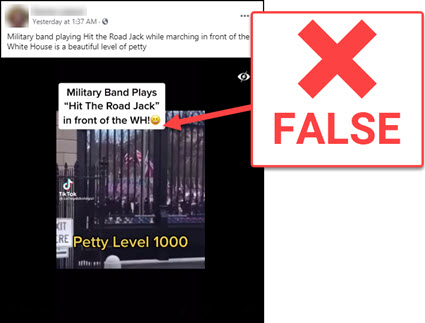 NO: A military band did not play “Hit the Road Jack” in front of the White House during then-President Donald Trump’s final days in office. YES: The audio track on this video has been replaced. YES: The original video was tweeted on Jan. 18 by CNN’s Jim Acosta and shows the U.S. Army Band playing “National Emblem” as it rehearsed for the inauguration on the White House grounds. YES: The fact-checking organization Lead Stories found that the source of the “Hit the Road Jack” audio is a 2012 recording of the Ohio State University Marching Band. 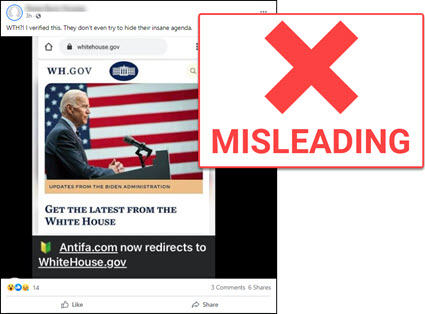 NO: President Joe Biden’s administration is not affiliated with the “antifa” (anti-fascism) movement. YES: The URL “antifa.com” began redirecting traffic to the White House homepage (whitehouse.gov) on Inauguration Day. NO: This is not evidence of any relationship between the antifa movement and the White House. YES: Anyone can purchase a web domain and redirect it to any other website they choose. YES: Prior to redirecting to whitehouse.gov, the site was redirecting to Biden's presidential campaign website. YES: The antifa.com web domain has been intermittently active since at least 1999 and, as these search results from the Internet Archive’s Wayback Machine show, it was for sale as recently as Jan. 30, 2020. 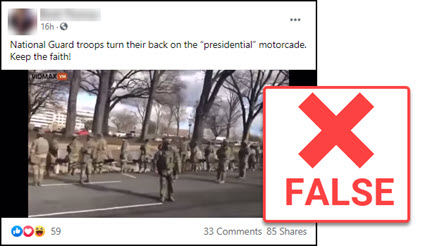 NO: This video does not show National Guard troops turning their backs on President Joe Biden’s motorcade on Inauguration Day. YES: It shows National Guard members protecting the route taken by Biden’s motorcade on the way to the inauguration, including following routine protocol and facing out to watch for threats. YES: Lead Stories located the original video, which was tweeted by Ines de La Cuetara of ABC News on Jan. 20. 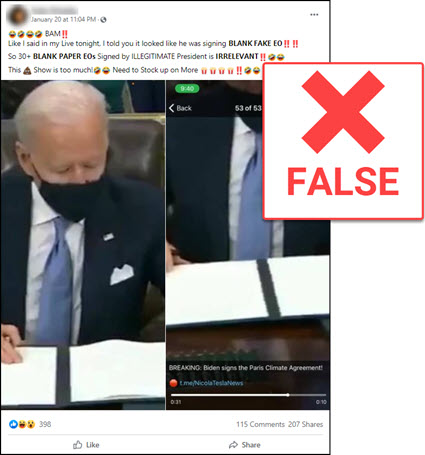 NO: President Biden did not sign blank papers instead of authentic executive orders after his inauguration on Jan. 20. YES: These screenshots of low-quality video make the text on the executive orders he is signing appear blank. YES: Video footage of Biden signing his first executive orders on Jan. 20 captured by AFP News Agency clearly shows text on the pages. 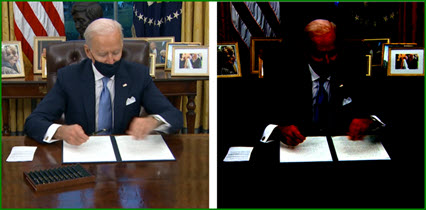
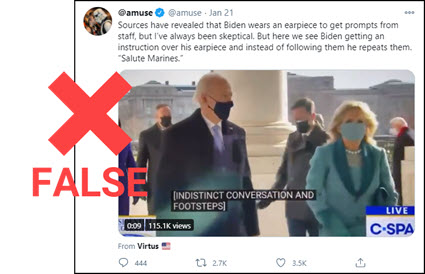 NO: Before he was sworn in as president, Joe Biden was not being given instructions through an earpiece on his way to the inauguration. NO: Biden was not expected to salute the Marines who were stationed at the doors of the U.S. Capitol Building when he arrived for the inauguration. YES: Biden said something about the Marines as he approached the doors, but the exact words are inaudible. YES: Baseless rumors about Biden receiving coaching via a non-existent earpiece repeatedly circulated during the 2020 campaign. YES: Similar earpiece rumors have circulated about other political candidates since at least 2000. |
 |
A: We love this question! Journalists are in the business of finding out information of public importance. When deciding which sources to interview, journalists first consider: What information does the public need to know to understand this topic? Who would be in the best position to know the information? Who could speak with authority on this subject? It may be elected officials, subject matter experts, everyday people or all of the above. On deadline, journalists often cast a wide net for relevant sources, putting out calls, emails and messages requesting interviews. Sometimes, journalists may end up talking to a spokesperson or representative from a particular group or agency. But in every news report, standards-based journalists should also aim to be fair. That includes making every effort to reach each source involved in a story. For instance, when reporting on a court case, journalists would be sure to contact each party involved in a lawsuit (often through their attorneys). Finally, it’s important for journalists to avoid quoting the same people over and over again in news coverage. Some journalists even periodically review their sources in previous stories to ensure that their reporting is representative and spotlights diverse voices and perspectives. |
|
★ Sift Picks Featured “'Transparency back to the briefing room': Psaki commits to pre-Trump press norms” (Matthew Choi, Politico). Related:
Discuss: During her briefing with reporters, Psaki spoke of “bringing truth and transparency back to the briefing room.” What does it mean for a government to be transparent? What does it mean for news organizations to be transparent? How can journalists hold the Biden administration accountable on this promise? Is there some government information that shouldn’t be public? Who decides? Idea: Watch Psaki’s first press briefing as a class. Take note of the questions that journalists ask, including the first question from Zeke Miller of The Associated Press (at 4:57): “When you are up there, do you see yourself, your primary role as promoting the interests of the president, or are you there to provide us the unvarnished truth so that we can share that with the American people?” What do students think of Miller’s question, as well as Psaki’s answer? What other questions would students have asked Psaki during the briefing? Quick Picks “All journalists are humans with feelings and emotions and opinions and biases.” (Wesley Lowery, Twitter thread).
“Trump-ally media outlet OAN quietly deleted articles about Dominion despite publicly doubling down on election conspiracy theories” (Jacob Shamsian, Business Insider via Yahoo News).
“After Capitol attack, social studies and civics teachers struggle with real-time history lessons” (Joe Heim and Valerie Strauss, The Washington Post).
|
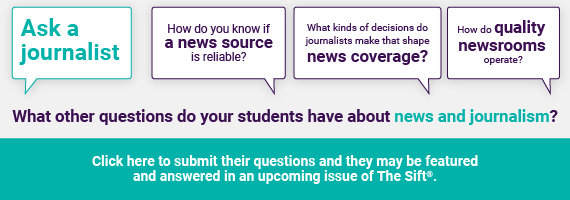 |
|
What else did we find this week? Here's our list. |
|
Thanks for reading! Your weekly issue of The Sift is created by Peter Adams (@PeterD_Adams), Suzannah Gonzales and Hannah Covington (@HannahCov) of the News Literacy Project. It is edited by NLP’s Mary Kane (@marykkane). |
|

